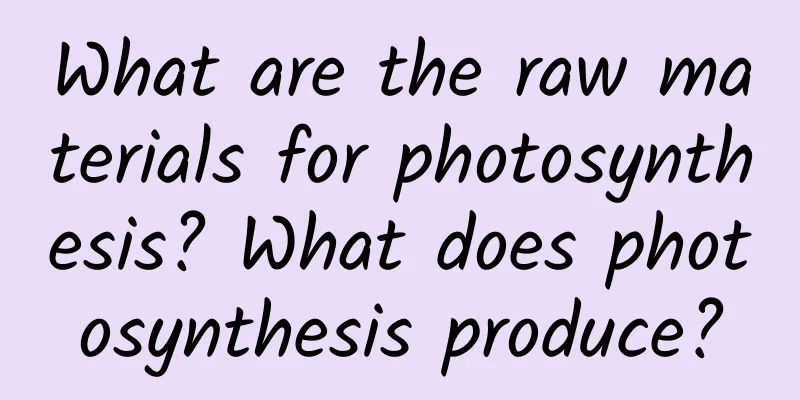What are the raw materials for photosynthesis? What does photosynthesis produce?

|
Photosynthesis usually refers to the process by which green plants absorb light energy, synthesize carbon dioxide (CO2) and water (H2O) into energy-rich organic matter, and release oxygen at the same time. I believe everyone knows this because we have come into contact with it in textbooks and in life, but what are the raw materials of photosynthesis? What does photosynthesis produce? What is the whole process of photosynthesis like? If you want to know more in-depth knowledge, please open the article below to have a look! Contents of this article 1. What are the raw materials for photosynthesis? 2. What does photosynthesis produce? 3. The whole process of photosynthesis 1What are the raw materials for photosynthesis?The raw materials for photosynthesis are water and carbon dioxide. Photosynthesis usually refers to the process by which green plants absorb light energy, synthesize carbon dioxide and water into energy-rich organic matter, and release oxygen at the same time. Photosynthesis is divided into two stages: light reaction and dark reaction. During the light reaction stage, chlorophyll converts light energy into electrical energy and then into active chemical energy and stores it in ATP. During the dark reaction phase, the active chemical energy in ATP is converted into stable chemical energy in organic substances such as sugars. 2What does photosynthesis produce?Photosynthesis produces water and organic matter. The process of photosynthesis is as follows: Photosynthesis is a biochemical process in which green plants use photosynthetic pigments such as chlorophyll and certain bacteria, such as halophilic archaea with purple membranes, use their cells themselves to convert carbon dioxide and water, or hydrogen sulfide and water for bacteria, into organic matter under the irradiation of visible light, and release oxygen, or hydrogen released by bacteria. 3The whole process of photosynthesisPhotosynthesis usually refers to the process in which green plants (including algae) absorb light energy, synthesize energy-rich organic matter from carbon dioxide (CO2) and water (H2O), and release oxygen at the same time. Light reaction stage: The characteristic of the light reaction stage is that the electrons released by the oxidation of water molecules driven by light are transferred to the thylakoid cavity through an electron transfer system similar to the electron transfer chain of mitochondrial respiration, so that it is reduced to. Another result of electron transfer is that protons in the matrix are pumped into the thylakoid cavity, and the transmembrane proton gradient formed drives phosphorylation. Dark reaction stage: The dark reaction stage uses the NADPH and ATP generated by the light reaction to assimilate carbon, so that the gaseous carbon dioxide is reduced to sugar. Since this stage is basically not directly dependent on light, but only on the supply of NADPH and ATP, it is called the dark reaction stage. The place of dark reaction is the chloroplast matrix. |
<<: What are the conditions for photosynthesis? Can all living things perform photosynthesis?
Recommend
Will chlamydia in women heal on its own?
There are two types of mycoplasma infection, vira...
How to improve breast pain after menstruation
During the menstrual period, women should pay att...
When is the best time to test for early pregnancy?
There are many ways to test early pregnancy now, ...
The benefits and taboos of hot spring bathing, be sure to read it!
Because the weather is cold and dry in autumn and...
Can uterine fibroids be felt?
Women who have had uterine fibroids or have a lit...
Symptoms of menopausal syndrome in women
There are many types of female diseases. When tre...
Will I get sick if I have sex during my menstrual period?
Nowadays, many young people have a strong desire ...
Pictures of bleeding during pregnancy
For some more experienced pregnant women, bleedin...
The pros and cons of eating eggs
The egg is what we usually call the female gonad....
World Osteoporosis Day | This free method is better than calcium supplementation
October 20th is World Osteoporosis Day, and this ...
To make matters worse, why is Sange so miserable?
According to a report by the Global Times, as Ind...
Will eating only one meal a day damage your stomach? What should I do if I don't want to eat?
Many people who like to stay at home during holid...
How to choose guava? Is guava an allergy-inducing food?
Guava is rich in lipids and proteins. It can be e...
How to avoid menopause
Postmenopause means that women no longer have men...
How to treat cervical erosion and vulvar itching?
I think many people have heard of the term cervic...









